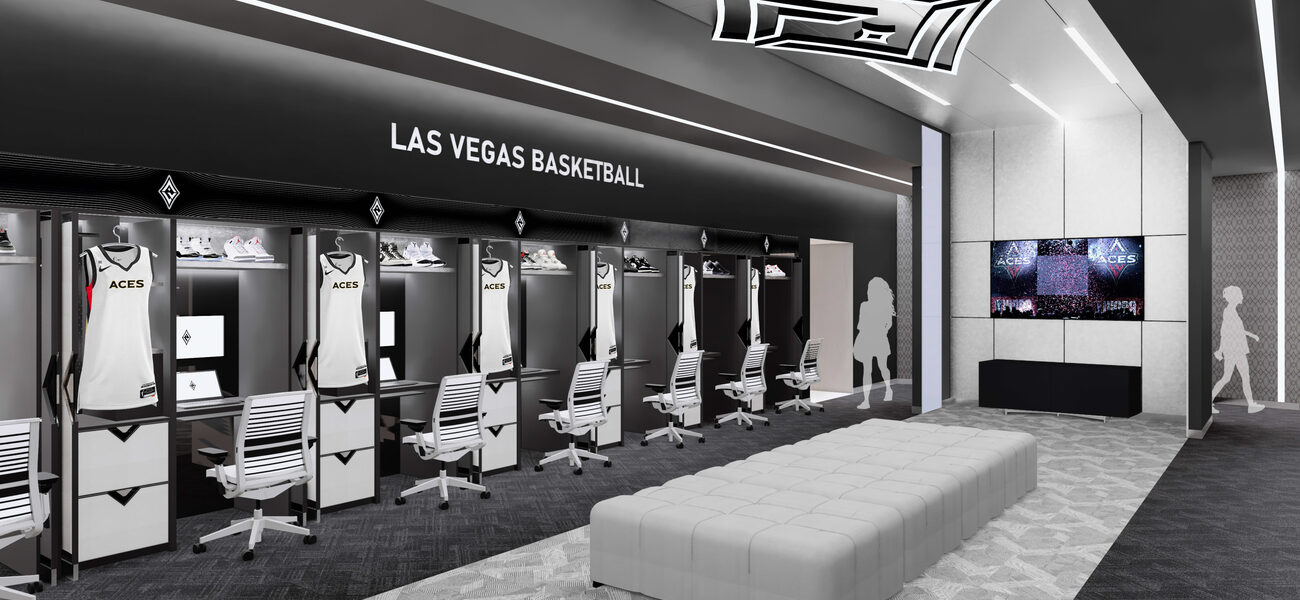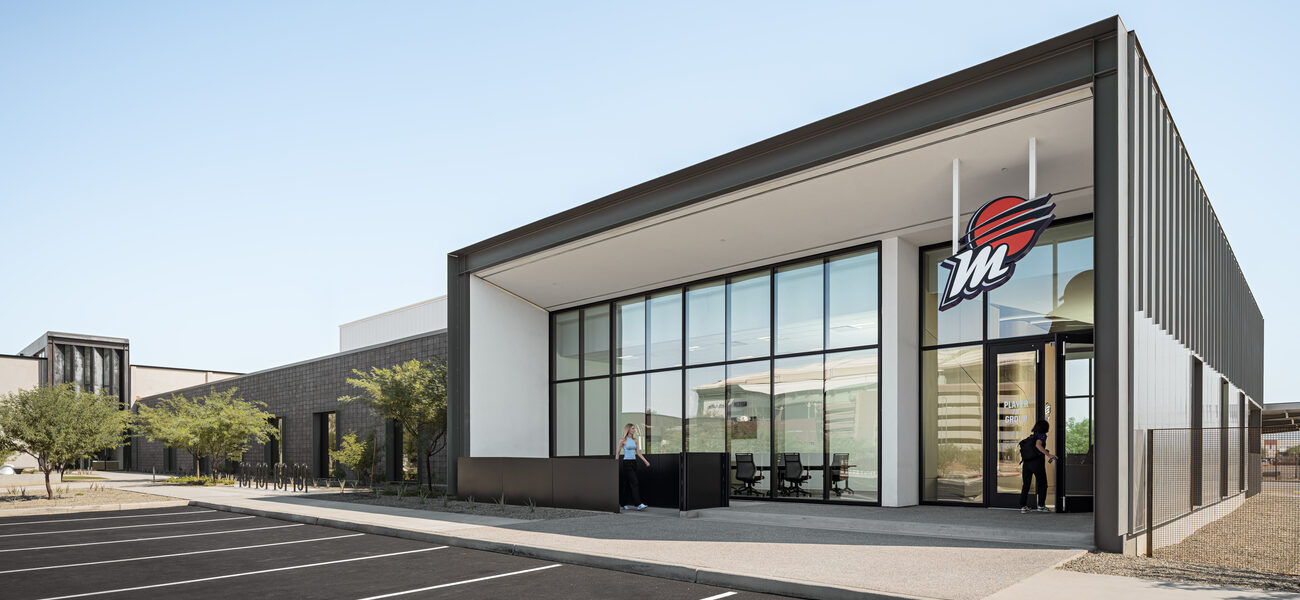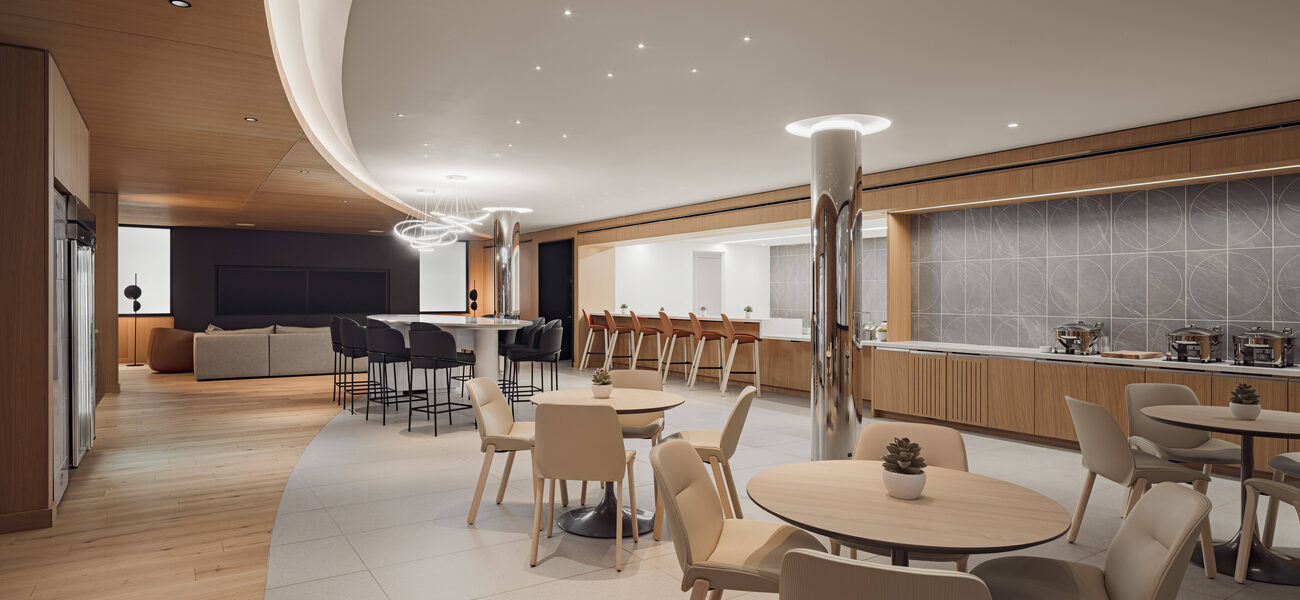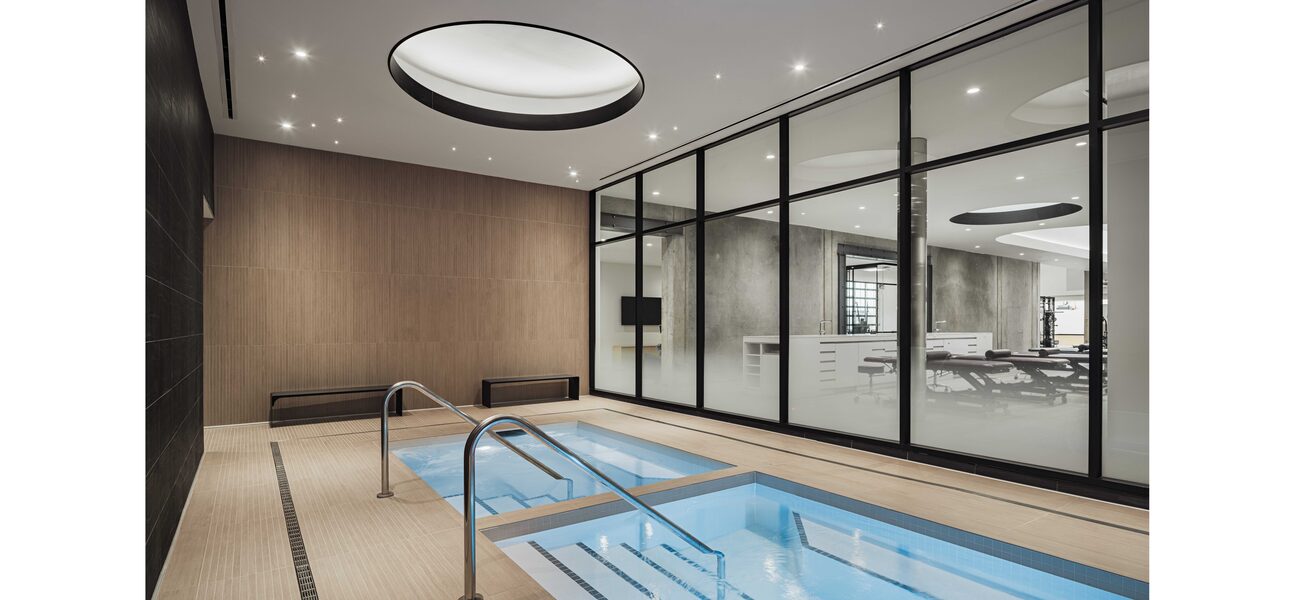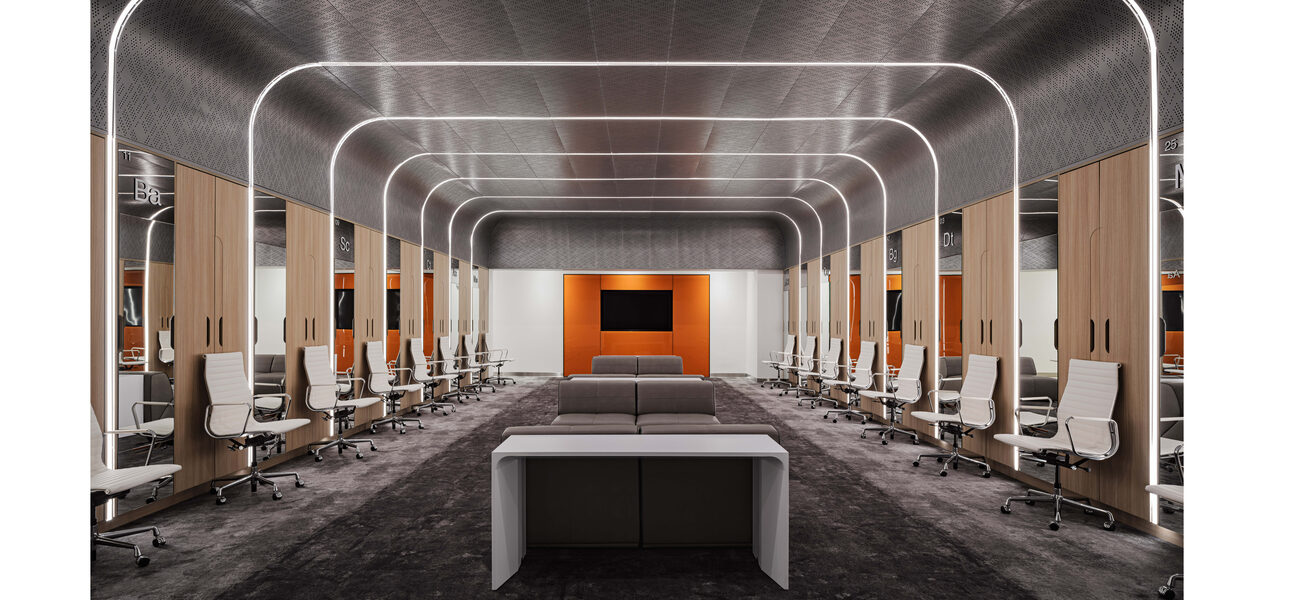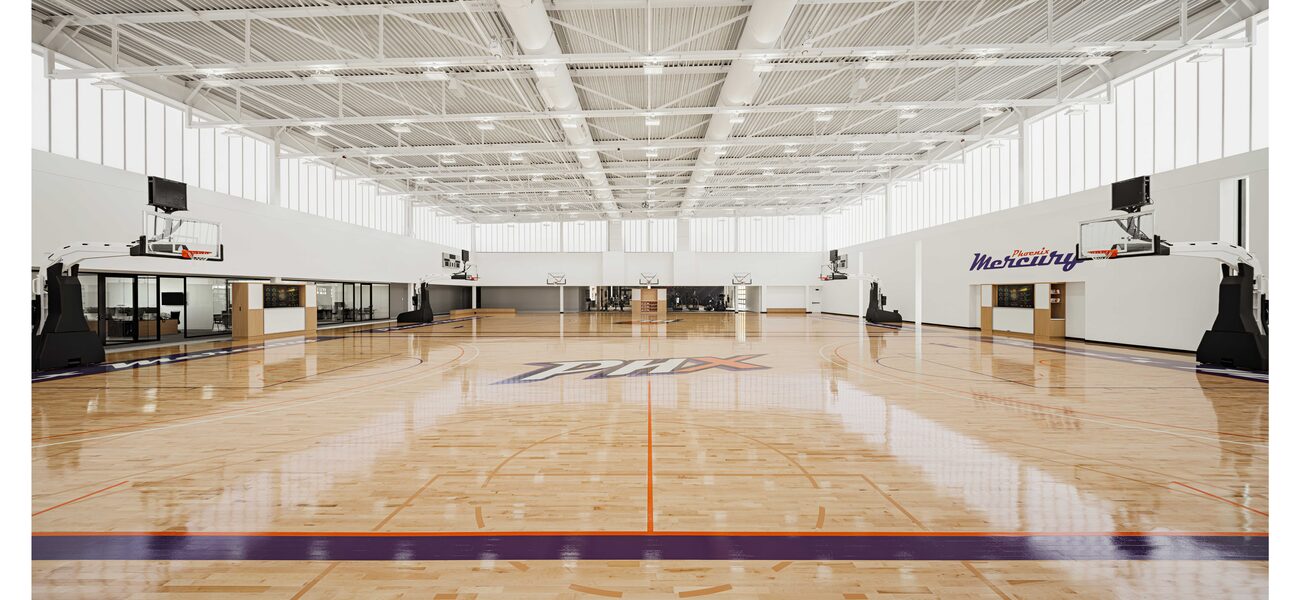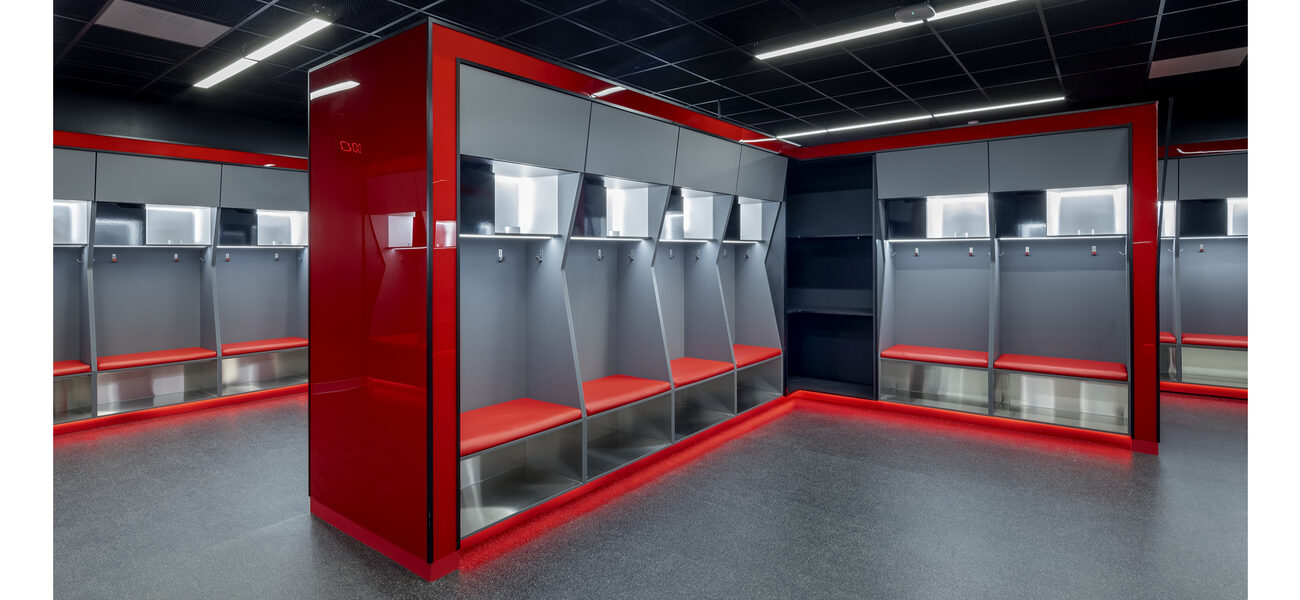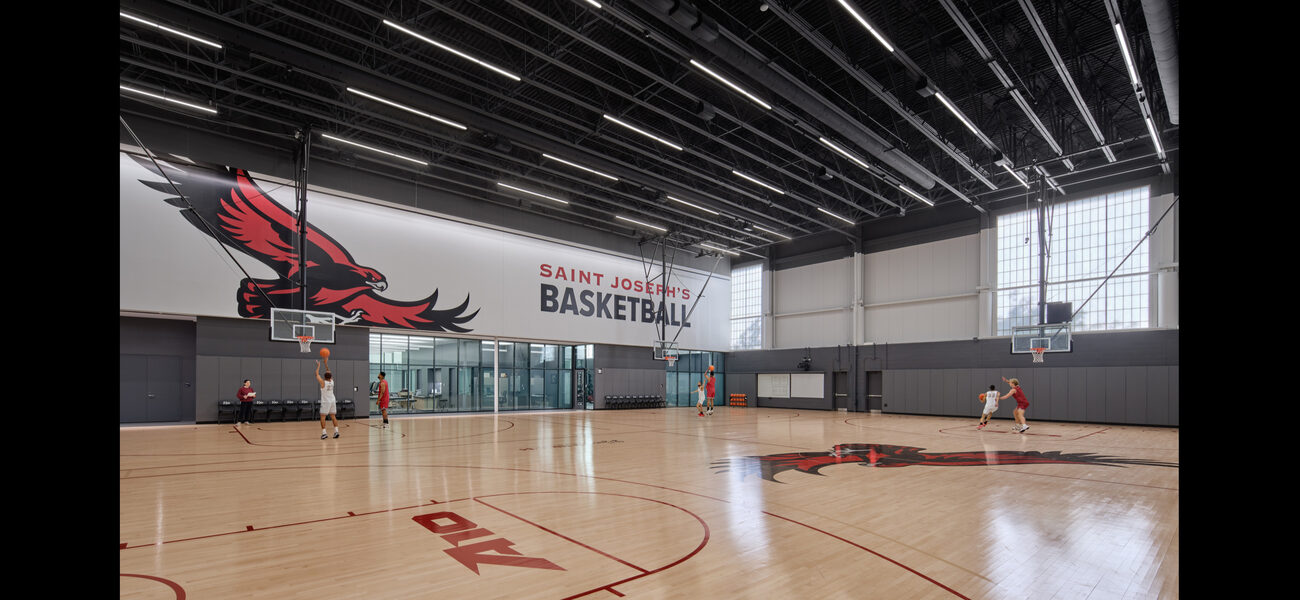One of the biggest sea changes in both professional and collegiate athletics is the increased participation of women at all levels—as team owners, athletes, coaches, officials, and staff. Coverage of women’s basketball and women’s soccer, which eclipsed men’s soccer for a time, seems to dominate the sports news cycle, and viewership is expected to keep rising in 2025. The Professional Women’s Hockey League played its first game in January 2024, and the world’s first stadium built solely for a professional women’s sports team opened in March 2024. January 2025 saw the inauguration of a new 3x3 women’s professional basketball league, called Unrivaled, based in Miami. Revenue from women’s sports nearly doubled in 2024, to $1.88 billion globally, and is projected to reach $2.35 billion in 2025. More than half of that revenue came from North America, and investors are taking note.
“This is changing the landscape of athletics in a lot of regards,” says Peter Broeder, AIA, principal designer at HOK in Kansas City, Mo. “Just seeing the trajectory of women’s athletics at the professional level has been really exciting. Recognizing that women’s athletics has significant revenue associated with it is leading to purpose-built women’s venues and training facilities.”
Women at the collegiate level are also demanding equitable facilities and benefits. Title IX, passed in 1972, guaranteed women equal access to play sports, but said nothing about the facilities. Generations of women athletes have been training and playing in collegiate facilities designed for men that are still in use after more than 50 years. Now those institutions are facing pressure to make the facilities as equitable as the opportunity to play.
“Professional sports and collegiate institutions—small and large—have a ton of momentum around investing in facilities across the board,” says Jennifer Williams, AIA, IIDA, associate principal at Perkins&Will in Boston. “Certainly it’s easier to fundraise, with more excitement around women’s sports. We’re seeing more of an urgency to finally invest in significant renovations of all of these facilities. I think all these changes are improving the standards for men as well.
“I don’t think it’s because more women are playing sports,” posits Williams. “I think it’s because more women are in leadership roles that is helping this groundswell really take off, and not just on the sports side but also the university side and the organization, the developer, the company running the arena.”
Some of that momentum is the result of an exponential growth in streaming capabilities, says Matt McCammon, RA, NCARB, LEED AP, Fitwel, senior architect, technical leader at SMRT in Portland, Maine. “I can go on Hulu and watch a female equestrian competition from a school in California. There’s a massive amount of exposure, so the younger generation is getting excited about being able to play sports. Girls are saying, ‘I can be a professional basketball player.’ And there’s money to be made from it.”
“And that has shown advertisers that there’s a market there,” says Jessica Donoghue, AIA, senior associate, project architect for Gensler in Los Angeles. “I think streaming has definitely helped, and I think it’ll keep growing from there.”
It’s not just women who are responding to the evolution of women’s athletics. “One factor is the absolute increase in America in online sports betting,” says Nick Vaughn, senior principal, director of Education and Athletic Practice at SMRT. “Over 41% of all male gamblers gambled on women’s sports. Men have a commercial interest in watching women’s college and professional sports.”
Game-Day Venues: Size Matters
At Matthews Arena at Northeastern University in Boston, the oldest continually operating hockey arena in the country, the women’s ice hockey team has to walk down stairs—in their skates—to get from their locker room to the ice. The men do not. That is an extreme example of what happens when you squeeze a woman’s athletic program into a legacy facility built more than 100 years ago exclusively for male athletes. Matthews Arena is set to be replaced with a new 290,000-sf, $350 million facility—in design development by Perkins&Will—which will address a host of inequities, with non-gender-specific locker rooms for officials and coaches, and men’s and women’s team suites and locker rooms that are mirror images of each other, providing a completely equal experience, says Williams of Perkins&Will.
You don’t have to look back 100 years to find facilities that are unsuited to accommodate a mix of men and women athletes, coaches, and officials.
“As recently as 10 years ago, venues only had one big room with lockers in it, because all of the referees were men,” says Demetra Thornton, AIA, NOMA; principal and managing director at Gensler in Raleigh, N.C. “Now we’re saying, ‘Hey, you will definitely have women officiating, and you may have women playing here someday, and you want to have the flexibility to be able to accommodate them and make them feel comfortable in your facility.’”
The reverse is also true: Men are coaching women’s teams, so privacy as people approach the locker rooms is important. “In the men’s locker room, you’d just walk into this large space, and you’d have your lounge, your locker room area, your wet area, and it’s all interconnected. It’s all open to each other,” says Shannon Bartch, AIA, LEED AP, NCARB, DBIA, regional leader of sports, recreation and entertainment at HOK in San Francisco. “Now you’ve got to think about, how does that locker room layout work?”
“I have a pro client right now who is renovating an existing facility that’s only 20 years old,” says Christina Nguyen, AIA, NCIDQ, LEED AP, senior associate and senior project manager at Perkins&Will in Atlanta. “They are removing urinals and replacing them with regular toilets to increase that flexibility.”
That approach is becoming the norm in new construction, as well. Snapdragon Stadium at San Diego State University was designed by Gensler in 2022 to accommodate a variety of sporting events for both men’s and women’s teams, with gender-neutral locker rooms. The stadium is home to the San Diego State men’s football team, as well as The Wave, a professional women’s soccer team that plays for the National Women’s Soccer League (NWSL).
The increase in women’s athletics is also driving up attendance by women spectators, so venues need to cater to their needs, as well, with improved rest rooms, more family-friendly spaces, and nursing rooms.
Equity is good, but one of the downsides of sharing a game-day venue is that men’s teams still tend to draw a much bigger crowd, so their arenas are very large. It changes the dynamics for the women to play in that stadium when it looks empty.
“It’s jarring,” says Donoghue. “Even if you have the most excited fans, but the entire upper deck is empty, it definitely dampens the mood.”
The NWSL team Seattle Reign play at Lumen Field, which seats 68,740 fans. “They typically only have 8,000 to 12,000 in ticket sales,” says Donoghue. “We really do notice a difference in the environment, in the fan excitement, which then translates to player intensity. It’s really a driver when you actually have a venue that’s sized to your audience. Can they design or move into venues that are a more appropriate size, which then increases fan excitement and engagement, and then drives the need for larger capacity?
“We’re trying to figure out what is the right sweet spot,” she says.
This is a bigger issue for soccer, which is played on a huge field that creates a more expansive seating array, than it is for the seating around a relatively small basketball court.
The Kansas City Current, of the NWSL, play in CPKC stadium in Kansas City, Mo., the first professional athletic venue in the world purpose-built for a women’s team. Designed by Generator Studio and opened in 2024, the $117 million stadium seats 11,500 but can expand to 20,500. No seat in CPKC Stadium is farther than 100 feet from the pitch, with premium suites low to the ground and anchored by private climate-controlled lounges.
The stadium also contains the team’s training facility. “The NWSL does not have many women’s training facilities, so we’re really at the precipice of what benchmark that is setting and where we go from there,” says Donoghue. “I’m hoping we’re going to start to see more venues that size to really drive attendance up, and then drive up more excitement in all of the leagues.”
The Current was the first NWSL team to sell out every home game in a season.
“That has really changed the landscape of athletics nationally, but also as a major cultural boost for Kansas City,” says Broeder of HOK. “There’s a tremendous amount of excitement around the women’s team.”
Training Facilities—An Athlete’s Home Away from Home
Game day is what makes the news, but it’s the training facility that makes the athlete. That is where they not only strengthen and condition their bodies, but also receive physical therapies, nutritional support, mental health counseling, and coaching. For female athletes—who often have the added responsibilities for everything from childcare to promoting their own careers—training facilities also need to provide amenities like a family room, lactation rooms, meeting rooms, and even a podcast booth.
“That’s where athletes are spending 90 to 95% of their time,” says Kristin Byrd, AIA, NCARB, design director and senior associate at Gensler in Austin. “It’s really a home away from home for a lot of athletes. What people don’t realize is that, especially when you get into the pro world, a lot of these athletes are still quite young. There might be 18-year-olds in these facilities alongside 35-year-olds.”
And many are mothers. In the past, there was a stigma around being a professional athlete once a woman had children, but that is slowly changing, says Marine Maroukian, Assoc. AIA, LEED, BD+C, sports operations director and senior design manager at Gensler in Los Angeles.
Says Byrd, “How can we help people remove the distractions that, as a woman, you’re constantly multitasking in your mind: What am I making for dinner? Where do I need to drop the kids off for childcare? Do I need to pick up the dry cleaning?”
There was no template or benchmarks for these facilities, so teams are starting from scratch and asking for the amenities they deem most valuable and impactful, says Donoghue.
“We realize that the needs of female athletes are different,” says Elizabeth Pritchett, studio director and design director at Gensler in Los Angeles. “We’re focusing on the mental load of these athletes. They’re hired to be amazing athletes, so how do we create spaces that really lean into and support the many hats that a lot of these female athletes are wearing?”
Professional Training Facilities
In 2024, the WNBA team the Phoenix Mercury opened a new $100 million training and practice facility that reflects the team’s holistic philosophy around athletic training. Athletes enter the 58,000-sf facility—designed by Gensler and von Staden Architects and delivered by Okland Construction—and pass by the courts and the coaches and administrators, all with open glazing that invites the athletes to check in if there’s anything they need to discuss, explains Pritchett.
That corridor leads to the heart of the building—the 2,000-sf Great Room. A variety of seating surrounds a large central island in an open-concept kitchen, where personal chefs prepare food specifically for the nutritional needs of each player. The space welcomes the player’s partners and children to hang out there while they practice. Whereas a lounge in a men’s facility would be more of an ancillary space with loud branding, says Pritchett, the Mercury’s Great Room has a residential feel that was a priority from day one of the design discussions. The facility also offers on-site childcare.
The locker room is also tailored to their specific needs. “We asked questions like, ‘What are you going to use your locker for? How is that different than how a man uses his locker?” says Donoghue. “We tailored all of the storage elements differently based on how many shoe boxes they got delivered, what types of bags they brought, what type of garments they would hang.” And each locker has a full-sized mirror.
The WNBA’s Las Vegas Aces have perhaps the most unusual amenity at their disposal: At 5 feet wide with a double door, each locker is large enough to contain a desk, creating a small office space that can be closed like a wardrobe.
“Basketball is their profession, but women do not get paid as much as men,” explains Donoghue. “So a lot of these women are seeking outside brand deals, or are arranging for themselves to be on podcasts, or seeking outside revenue streams, touching base with their social media or their managers.”
Solidifying their brand while they are at the peak of their career helps sustain them after they retire, explains Byrd. “It provides financial stability and security. Even if you are on a second-tier team, maybe most of the money you’re making is from the brand content you’re putting out and the attention you’re getting on your social media.”
“If you don’t have space dedicated for those meetings, someone will take over the space for storage and then it just becomes a dead space,” says Byrd.
Training Collegiate Athletes
Because professional teams recruit from colleges and universities, academic institutions are also investing more in their women athletes. The demand is growing for better facilities, because star high school athletes who are being recruited by universities will often base their decision on the school with the best facilities.
“There is certainly a synergy between what the professionals are having to keep up with and what’s being poured into the college sports,” says Pritchett. “And the college sports are doing that because they’re trying to use it as a recruiting tool.”
Byrd agrees: “Now that women are demanding more, a lot of colleges are going to have to step up their game in order to make sure they’re getting the best players for their sports.”
“If there’s enough money, for example in schools like Auburn or Georgia or Alabama, their training facilities are going to be better than pro training facilities,” says Bill Johnson, FAIA; senior vice president, design principal at HOK in Kansas City, Mo. “There’s a lot of pressure on the college facilities to do over-the-top facilities now, and it really comes down to recruiting the best athletes. Now it’s just become an arms race; it’s incredible.”
A winning season can generate a lot of money for a university, says Johnson, “and it just becomes this financial engine.”
“I think it translates from the professional side to the donor side as well,” says Maroukian, of Gensler. Collegiate donors who are the parents of athletes see professional sports in their child’s future, so they want to invest in the facilities that will help them get there.
“As every generation of female sports players is exposed to better high school facilities and coaches, the level of play increases, and there are higher expectations,” explains Vaughn, of SMRT. “Facilities were built to accommodate a certain number of athletes at a time; that number has increased, but the space hasn’t. Schools are now looking to increase that space.”
All of that social media exposure is helping women athletes make their case. During the 2021 Final Four basketball tournament, Sedona Price from the University Oregon called out the NCAA for the inferior weight room given to female athletes compared to the men’s. Her livestream went viral.
Sometimes building a separate women’s facility is not the best way to get the best accommodations. The Maguire Athletics Center at St. Joseph’s University in Philadelphia recently underwent a major renovation in which the men’s and women’s basketball teams have separate practice courts, nutrition, and locker rooms, but jointly decided to share the same strength and conditioning and athletic training space. That provided a superior shared facility that was larger than each team would have gotten separately, says Williams of Perkins&Will.
“The goal is to create an equal experience for men and women athletes,” says Williams. “The key to that is to give everyone that same quality of space.”
Where Do We Go from Here?
All indications are that the recent rise of women’s athletics is not a blip, but is on a sustainable upward trajectory.
“The more people have these experiences, the more it will become just the norm,” says Thornton, of Gensler. “At some point, we won’t be having articles about women’s sports teams or how we’re designing differently for women. It’ll just be a matter of, this is how we design, and it happens to be women playing in this facility.”
“I think all of these women deserve to have their own home-based training facilities,” says Donoghue, of Gensler. “And then I would love if there’s also an upward trend in the venue space, as well, to right-size those capacity needs—12,000 to 18,000 capacity feels like a sweet spot for women’s sports right now.”
Bartch of HOK would like to see the trend toward social media studios in training facilities extend to game-day venues. “They’re not always going to be highlighted as much as male athletes,” she says. “I think female athletes aren’t going to be paid the same amount. So they have to be out there creating their brand to find more income. They need to do more than a male athlete who just signs a contract.”
“I think that eventually, when we get to true equity, male facilities also will have more family rooms and more spaces for kids,” predicts Maroukian. “That’s when I think we will get to that true equity. We’re in the process of getting there. It’s the FOMO effect: If they have it, I want it. I think all that culture is finally catching up, and it is translating in our architecture.”
By Lisa Wesel
